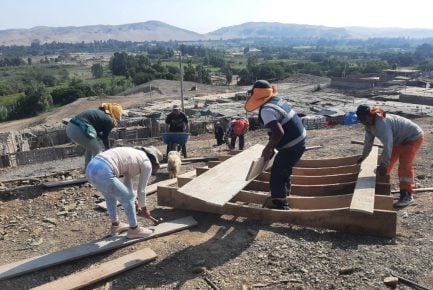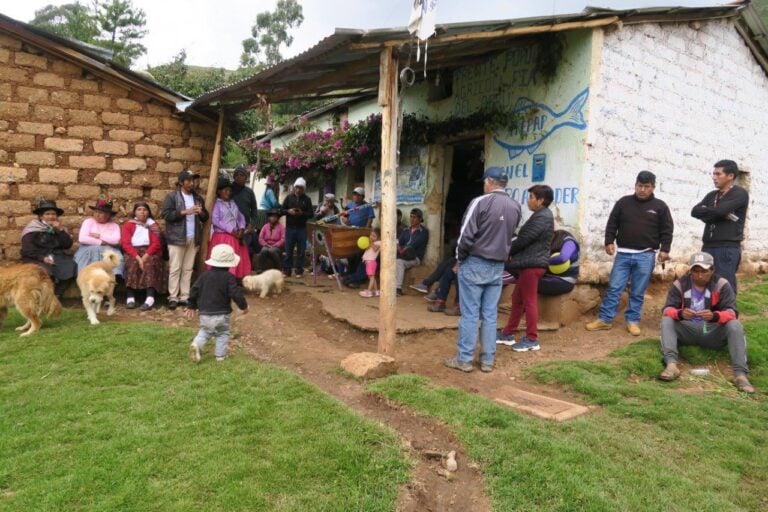projects in progress
The drinking water projects we are currently carrying out with local populations are improving health and hygiene for all. They enable communities to work together, men and women, for a common good. Women and girls no longer have to worry about fetching water. In each village, a committee made up of at least 50% women is elected, and operators are trained to ensure the proper management and sustainability of the project. By taking an active part in the projects, the farmers boost their self-esteem and are ready to take on new challenges.

The drinking water projects that we currently carry out with local populations improve the health and hygiene of all. They allow communities to work together, men and women, for a common good. Women and girls no longer have to deal with the chore of fetching water. In each village, a committee composed of at least 50% women is elected and operators are trained to ensure the good management and sustainability of the project. By actively participating in the projects, the farmers strengthen their self-esteem and are ready to take on new challenges.
. Village about fifteen hours drive from Lima and at an altitude of 3,424 m
. 444 inhabitants (122 families) live from agriculture and small livestock
. Cell phones and electricity
The population consumes contaminated surface water.
. Installation of a gravity water system
. Construction of the water catchment structure
. 2 tanks: one 10 m3 and one 30 m3
. Distribution network and home connections
. Construction of a cement sink in each house or in the yard
Huallpapaccana, Vischongo District, Vilcashuaman Province, Ayacucho
Village about sixteen hours by road from Lima and at an altitude of 3,980 m
. 120 inhabitants (20 families)
People consume contaminated surface water.
. Installation of a water system by solar-powered pumping
. Construction of the water catchment structure of a spring
. A cistern of 30 m3, a high tank of 20 m3
. Distribution network and home connections
. Construction of a cement sink in each house or in the yard


Village about two hours north of Atalaya on the Ucayalí River
. 300 inhabitants (70 families) of the Asháninka ethnic group. These families live from fishing and agriculture.
. Internet and cell phone access
. Primary school with 60 pupils
People are drinking stagnant, greenish water from a contaminated stream.
. Digging a artisanal well 12 to 15 m deep
. Construction of a 15 m3 high reservoir
. Installation of a solar-powered pumping system
. Distribution network and home connections
. Construction of a cement sink in each house or in the yard
Village about 4 hours drive from Lima on the Pacific coast
. 550 inhabitants (127 families)
. Only one kindergarten. So the children go to school in Santa María.
. Hydrogeological study
. Construction of a well (pozo tubular)
. Installation of a water system by solar-powered pumping
. Construction of a 45 m3 high reservoir
. Distribution network and home connections
. Construction of a cement sink in each house or in the yard


Village about 15 hours drive from Lima and 3,157 m above sea level
. 586 inhabitants (137 families) who live from agriculture and small livestock
. Access to cell phone and electricity
. Primary school in the village
. Installation of a gravity water system
. Construction of a water catchment structure
. A 30 m3 tank
. Distribution network and home connections
. Construction of a cement sink in each house or in the yard
. 286 inhabitants (67 families) who live from agriculture and small livestock.
Each family stores rainwater collected by the roofs, the only water available in this village and in very limited quantity during the dry season. People then consume the highly contaminated surface water (irrigation canals).
. Access to cell phone, electricity and primary school in the village
. Installation of a solar-powered pumping system
. Construction of a water catchment structure from a spring
. Two cisterns, one large reservoir
. Distribution network and home connections
. Construction of a cement sink in each house or in the yard


